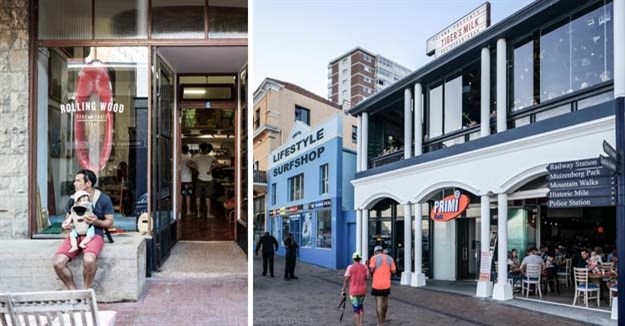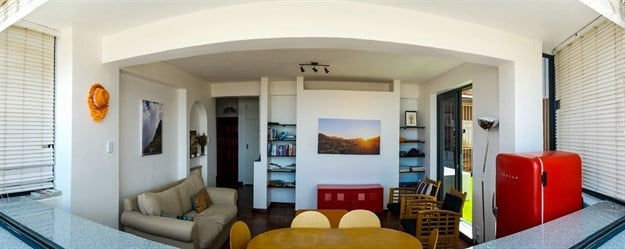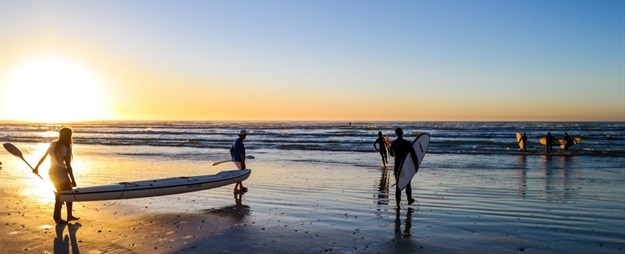
Top stories






ICTThe new fundamentals: What employees expect from IT support in 2026
Oscar Modiba, BET Software 1 day
More news

























Muizenberg Improvement District (MID) directors Steven Frankal and Lesley Schroeder chat to us about what can happen when a thoughtful group of locals look at public space with fresh eyes and a little imagination.

Schroeder: The sparkle never really left, it just got covered over by the sands of a shifting social and economic landscape. Muizenberg beach has always been the main draw, but ten years ago most of the buildings along the beachfront were derelict and illegally occupied and the beach had become a no-go area because of crime.
The redevelopment of the beachfront strip by Faircape was a game-changer, and this happened in tandem with a new generation of property owners discovering the village, plus social surfing taking off globally. Muizenberg ranks up there with the best year-round surfing spots in the world. Its gentle waves are ideal for beginners, and now that visitor confidence is back, the local surf industry has rocketed.
Tich Paul, who has observed the changing fortunes of Muizenberg since opening his Lifestyle Surf Shop 40 years ago, says:
If you couple all this with the cleaning up of the village by the Muizenberg Improvement District, the work of the False Bay Tourism Association and Faircape seeing an opportunity to buy up the beachfront properties and redevelop with a sensible mix of residential and retail – well, it all added goodwill and confidence to the holistic change which, individually, we were powerless to effect. What was a derelict environment is now a great place to be.
When we were rounding up input for this interview, Muizenberg resident Daphne Bradbury said:
The Atlantic seaboard looks like a poseur film set, while Muizenberg characterises everything that is best about a close-knit community. It buzzes with life and character and good spirit.

Frankal: MID did a survey which showed over 12,000 cars passing through the beachfront on a normal weekend. The local surf industry has developed a whole new kind of clientele as the demand for surf schools, surf gear and customised boards keeps growing. Businesses are lining up for space and the mix is carefully selected so that the overall experience for visitors is world-class.
The beachfront used to close down at five in the afternoon, now it’s a key destination with customers travelling from all over to tap into the offerings. People are out swimming, playing until the sun goes down at eight. After that they’re looking for a good dinner, music and a place to mingle, so most nights it’s still going strong at midnight.

Frankal: It’s not just the beachfront – the whole district is known for its rich architectural heritage, Tudor and Victorian styles and more recent Edwardian buildings. There are some outstanding Herbert-Baker designed houses in Muizenberg. Proposals to alter buildings more than 60 years old are carefully scrutinised by the City of Cape Town and local heritage societies. The interiors can be modernised, but the facades need to reflect the architectural era of the original building.
New development offers an opportunity to revive and celebrate Muizenberg’s architectural legacy. In the beachfront precinct, Faircape paid a lot of attention to the surrounding heritage fabric, and scale, complexity and colour played an important role in the design. It’s also pleasing to see new property owners renovating homes in keeping with the themes of the last hundred-odd years while adding their own touch of what is relevant now, in this time.

And the ownership is as varied as the offerings; young and old, immigrant, local. Houses are in high demand, and because the whole district has been uplifted, Muizenberg is attracting quality tenants paying market-related prices for the chance to live between the mountain and sea in a trendy village where people know their neighbours.
We are an inter-cultural inter-racial family, and until we came to Muizenberg, we had not found a space we could call home. We feel whole and happy here. - Gardie JudgeThe community spirit and willingness of people to be good neighbours is something I have never experienced anywhere else. - Lindi Swales
 What is the MID’s long-term vision for Muizenberg and the beachfront?
What is the MID’s long-term vision for Muizenberg and the beachfront?Schroeder: We want the district to be safe and attractive. A big part of that is making sure public amenities keep pace with development, tackling problem buildings and designing development that connects people and places. The Problem Building By-Law introduced in 2009 by the City of Cape Town has made a big difference because its gives teeth to the work of MID in tackling problem buildings and tenant overcrowding.
The old dusty circle at Surfers Corner had a dramatic makeover when the MID, working in partnership with our ward councillor, secured funds to pave and landscape it. Now, instead of being an eyesore, it’s a centrepiece.
We are also working with the city to pedestrianise the area linking the beach strip to Atlantic Road. This will create a natural flow through historic Palmer Road with its colourful mix of eateries, vintage stores, art, yoga and dance studios; and on through the village to False Bay Station and the Blue Bird Garage which regularly lists as one of South Africa’s top fine foods and goods markets.

The Blue Bird Garage is housed in an old airplane hangar and it’s a good example of how disused or abandoned buildings are being transformed into pretty much every imaginable commercial enterprise; cafés, restaurants, customised surfboard building, bike shops, pottery, dance, music, metal works and galleries. If you can imagine it, it probably already exists or is in the works.

Schroeder: In South Africa, confidence in policing and justice is undermined by the daily experience of citizens and, like anywhere else, Muizenberg has its share of opportunistic crime. Locals are inherently generous and caring - giving odd jobs to vagrants and feeding the hungry. But that kindness is often exploited, so with residents being crime-wary, they are working with the MID in a more coherent way to respond to public safety issues.
Community cohesion and crime prevention is the foundation for public safety, so we support our local neighbourhood watch (MCSI) in mobilising the community to form networks alert to suspicious behaviour, and the Muizenberg Improvement District provides a 24-hour Public Safety Patrol by vehicle and foot. Residents are closely connected through WhatsApp and Facebook groups. They share information, make sure street lights are working and alert each other to safety threats. Community volunteers patrol the streets at night and, because crime and grime work in tandem, the MID organises community clean-ups of the beachfront and the railway reserve between False Bay and Muizenberg stations.

Frankal: You have to think about how people use public space. The MID directors frequently walk about to observe how residents, visitors and possible criminals move through public thoroughfares and recreational space. This informs a lot of our environmental upliftment projects and safety measures. For example, the MID public safety patrol now offers a safe escort to residents travelling on the early morning and late evening trains.
We are constantly applying our minds to how we can create the type of public space that matches how residents and visitors want to use it. We already have an interested, mobilised community, so it’s a matter of giving leadership to that – guiding the process of creating public spaces and commercial zones that reflect the special character of the village and its people.
For more, visit the Muizenberg Improvement District website, www.mid.org.za.

The Muizenberg Improvement District thanks Rezeen Daniels for the photographs and old-timers: Tich Paul, Peter Wright, Errol King and Dave Jones for their reflections on the transformation of Muizenberg. See more of Rezeen Daniel’s work here: #MuizenbergtoManhattan.